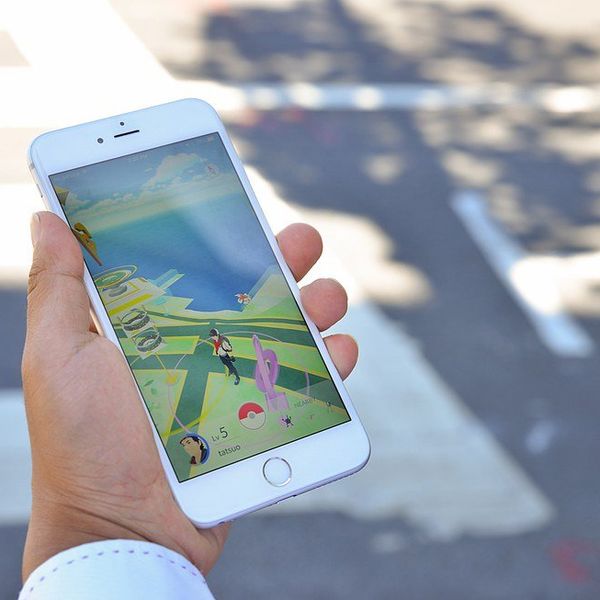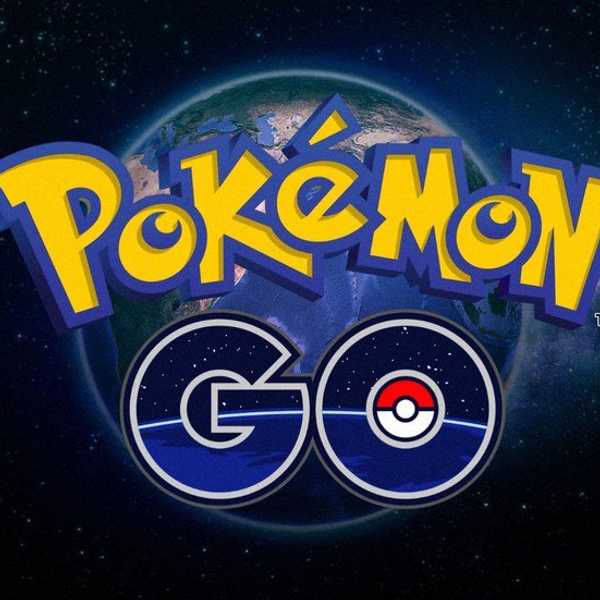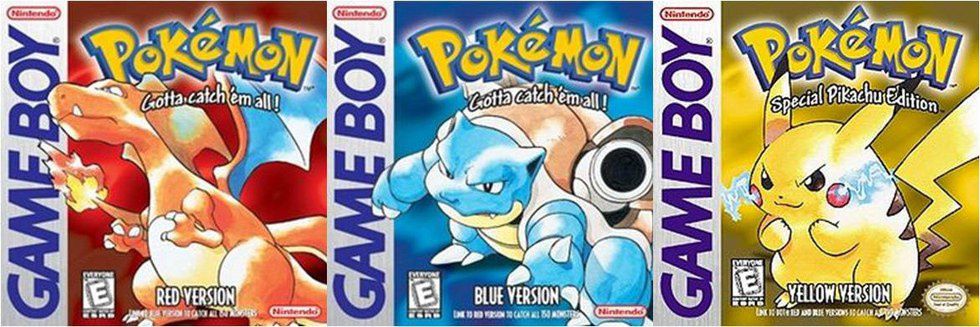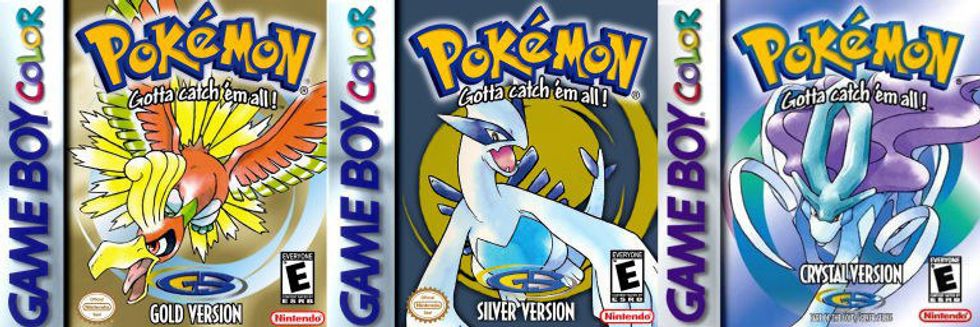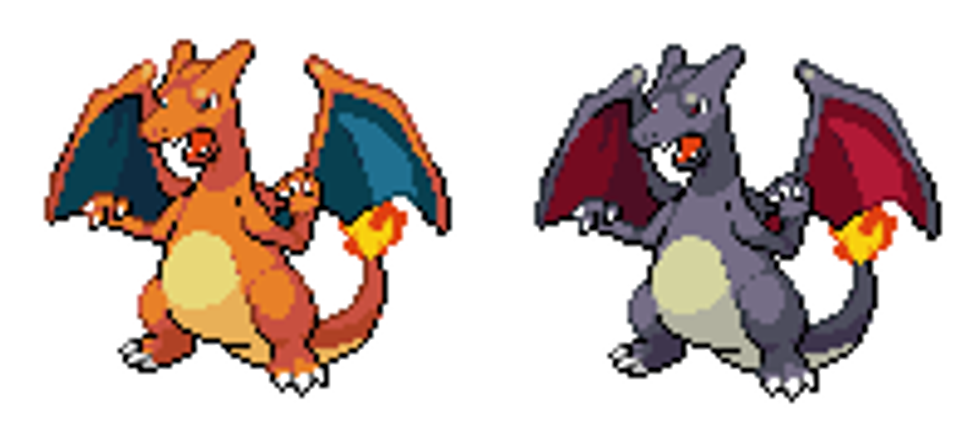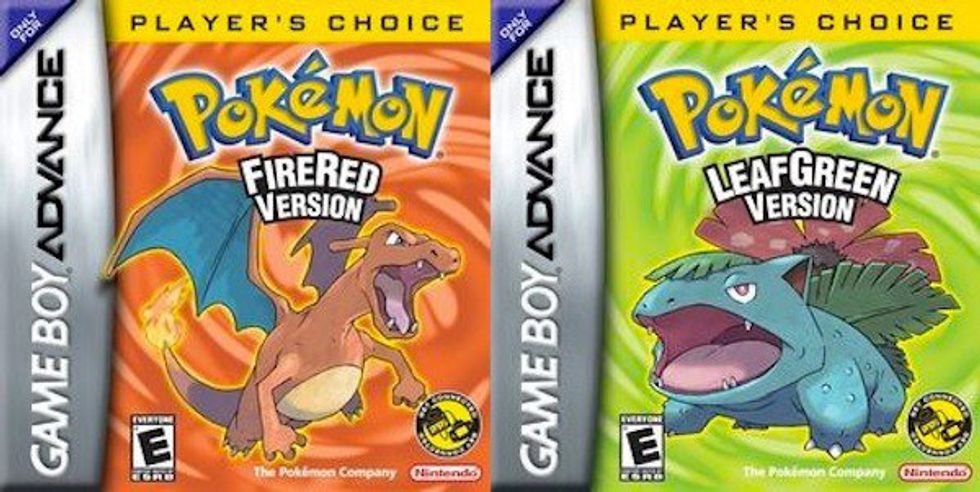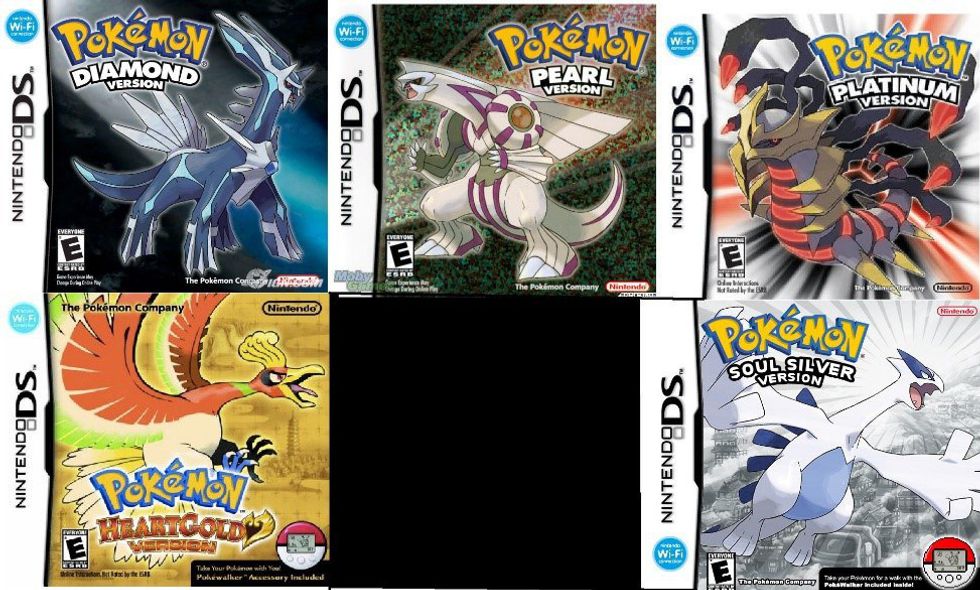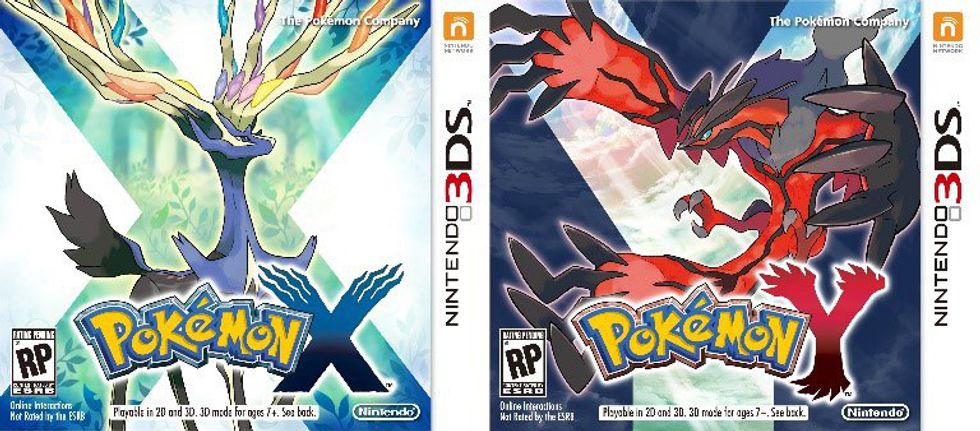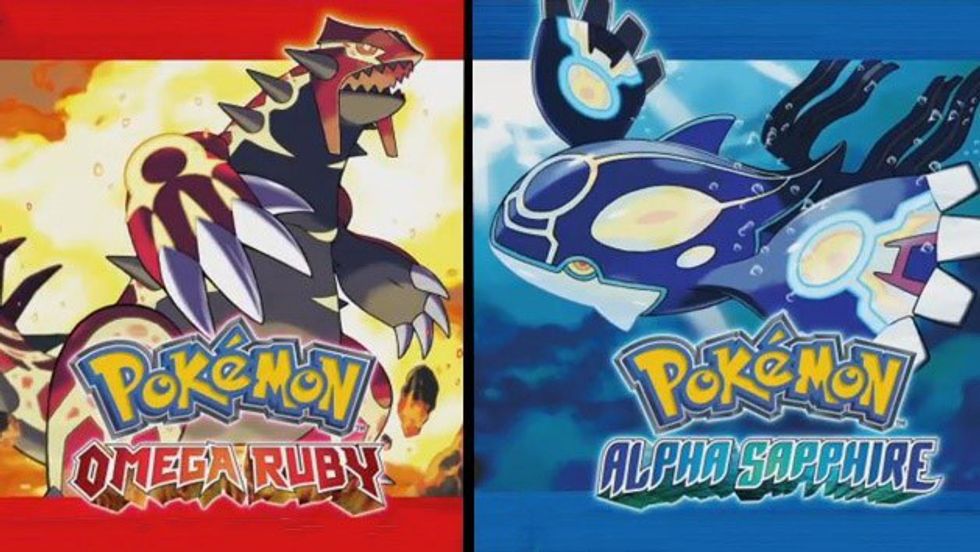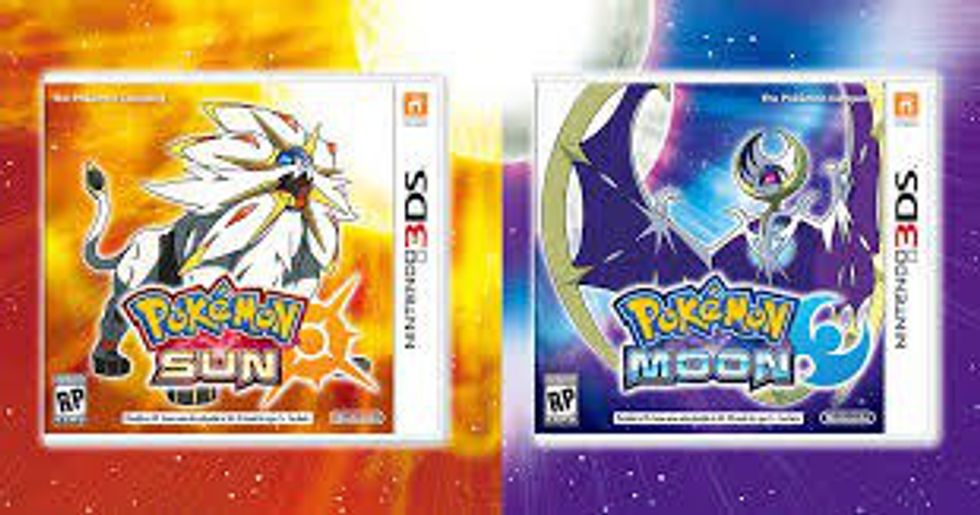“Pokémon, getto da ze!” Twenty years ago, two Game Boy games hit stores in Japan. They were Pocket Monsters: Red Version and Pocket Monsters: Green Version. They were instantly hits, and the franchise son became a worldwide phenomenon, with anime, video game, and trading card game incarnations taking up near-equal shares in public mind.
As years passed, the series has seen numerous changes in game and battle mechanics. Three additional Pokémon types have been added over the past twenty years, and the roster of monsters has grown from 151 to 801. I thought it would be a good idea to show how the battles have changed, but the basics remain the same.
Generation I: Red, Blue, & Yellow
The very first Pokémon games were Red & Blue (Red & Green in Japan), with Yellow coming out later. Red & Blue were entirely monochrome (It was on the Game Boy, remember?), while Yellow had some elements of color but was still very limited in visuals. These games were very different from later generations. However, they blazed the trail for Pokémon trainers around the world. The plot was simple: the player (as a 13-year-old boy) sets out on an adventure, capturing a team of up to six monsters, battling other trainers, defeating the evil Team Rocket, and becoming the Champion. Different Pokémon have different types, and certain types are strong against some types and weaker against others. With up to 151 Pokémon available, players could strategize and build their teams in many different ways.
The real attention-grabber was (and is) the multiplayer element. By using a device called a Link Cable, two players could link up their Game Boys and trade or battle with each other. Soon, players started coming up with strategies to maximize their teams’ potential. For example, Jolteon would run Pin Missile to counter the over-powered Alakazam, Thunderbolt for a same-type attack bonus (STAB), Thunder Wave to paralyze and cripple fast Pokémon, and Double Kick to damage Golem and Rhydon, which are immune to electric attacks. Thanks to this strategizing, an informal metagame sprung up, and children around the world sought out to battle their friends and become the best on the block.
Generation II: Gold, Silver, Crystal
Three years after the first-generation games hit the shelves, Nintendo released the second generation of Pokémon games for the Game Boy Color. Pokémon Gold and Pokémon Silver introduced the Johto Region, which was based on the Kyoto area of Japan. The new games introduced 100 new Pokémon such as Marill and Cyndaquil, and many of the original Pokémon returned as well. More importantly, because the games were on the GB Color, they were in full color, not monochrome like the first generation.
Gen II, as fans call it, introduced many new mechanics that have since become staples of the games. By leaving two compatible Pokémon at the Daycare, you could obtain a Pokémon Egg, which would hatch into a new level 5 Pokémon. Pokémon could learn moves this way that they normally couldn’t by having the father know that move and the mother be of the same evolution family as the baby. To this day, players have been breeding Pokémon nonstop as they strive to obtain the most powerful Pokémon they can.
Gold & Silver also introduced “held items”. Pokémon can be given an item to hold, such as a berry, and certain items can be used automatically in battle. For example, a Pokémon holding a Quick Claw has a 20 percent chance of attacking first even if it’s slower than the opponent. This added another element of strategy to the competitive scene.
As the player progresses through the game, they encounter something odd: a Gyarados with a strange red color! In this way, the game introduces “shiny” Pokémon – rare cases of a Pokémon being a different color than usual. The rarity of these Pokémon combined with their interesting colorations made them quite desirable for players. An example, Charizard, is seen below. The one on the left is its normal color, while the one on the right is “shiny.”
Finally, Pokémon from the older games could be brought to the new ones via the “Time Capsule,” a mechanic that allowed trading between the two generations. This meant all 251 Pokémon could be obtained.
Generation III: Ruby, Sapphire, Emerald, Fire Red, & Leaf Green
When the new Game Boy Advance arrived, new Pokémon games soon followed. Ruby and Sapphire introduced the Hoenn Region and 135 new Pokémon with it. However, hardware limitations also introduced a problem: because the Game Boy Advance could not interact with the old Game Boy, many Pokémon from the previous two generations such as Charmander were unavailable.
To fix this, Nintendo released Fire Red and Leaf Green, which were remakes of the Generation 1 Games, and Emerald, which was an updated version of Ruby & Sapphire. By allowing trading between the five games, fans could once again “Catch ‘em All.”
Generation III introduced three major mechanics into the battling scene: natures, abilities, and double battles. Now, every Pokémon has a certain personality, or “nature,” that affects its stats. For example, a Pokémon with a Brave nature has a higher Attack stat, but a lower Speed stat. Strong trainers can find the right nature for each Pokémon.
Abilities were a significant change. In addition to its four moves, each Pokémon has an innate ability that affects the way it battles. A good example is Pikachu, whose Static ability can paralyze foes who make physical contact. Some abilities drastically improved their users, while other Pokémon did not get very good abilities.
Double Battles are important as well. In a Single Battle, each trainer sends out one Pokémon at a time. In a Double Battle, it’s two-on-two. Some moves only hit one enemy, while others can hit all Pokémon on the battlefield. Since the official Pokémon World Championships uses Double Battles, this format cannot be overlooked. The right combination of moves, abilities, and Pokémon is what wins battles.
Generation IV: Diamond, Pearl, Platinum, Heart Gold, & Soul Silver
When the Nintendo DS came out, fans knew what to wait for: Pokémon! 2007 saw the release of Pokémon: Diamond, Pearl, and Platinum. These games introduced another 107 new Pokémon. They also introduced something very useful: online play! Thanks to the DS’s (admittedly limited) online capability, players could battle and trade with anyone from around the world, and Pokémon from different countries could and did end up in players’ games.
A couple of years later, Nintendo released Heart Gold and Soul Silver, the remakes of the venerable Gold & Silver. These games are unique in that the first Pokémon in the player’s party can follow the player around in the game’s overworld. To me, this made Pokémon feel like more than just team members for battle: they became things to befriend and play with as well. Sadly, this feature would not stay; Heart Gold and Soul Silver are the only games to have that feature.
Gen V: Black & White, Black 2 & White 2
In the second half of the DS’ lifespan, a new generation of Pokémon was released. Black & White came out in 2011 (2010 in Japan) and introduced a whopping 156 new Pokémon. The games also broke precedent from the past by making previous Pokémon unavailable until after the story was completed, instead requiring players to use the new Pokémon. The games were far more story-based, with the theme being “Truth vs Ideals.”
A year later, Black 2 and White 2 came out as direct sequels to Black & White. This time, old and new Pokémon could both be found during the storyline, allowing players more familiarity when progressing through the new story.
Generation V introduced “Hidden Abilities,” where a Pokémon has a different ability than usual that is harder to obtain. Going back that Pikachu example, Pikachu’s normal ability is Static. However, its hidden ability, only available in limited circumstances, is Lightning Rod, which pulls in electric moves and absorbs them to increase its Special Attack stat. Many Pokémon who were previously hindered became more viable in competitive play because of their new abilities.
Generation VI: X, Y, Omega Ruby, & Alpha Sapphire
In 2013, Generation VI was released for the 3DS. Pokémon X & Y introduced the Kalos region, heavily based on France. A year later, Omega Ruby and Alpha Sapphire were released as remakes for the old third-generation games. The sprite-based battles were visually replaced by fully animated models, but the battle style itself remained the same.
If Generation V was primarily story-focused, then Generation VI was the opposite. Generation VI is far more competitively-focused, and introduced new mechanics to make it a lot easier to breed strong Pokémon. However, the most important introduction of all was not new Pokémon, but a new boost to the old ones.
This mechanic is called Mega Evolution. This allows certain fully-evolved Pokémon to go a step further and evolve again, albeit temporarily, by holding a Mega Stone instead of a held item during battle. Mega Evolution drastically increases a Pokémon’s base stats, and usually (but not always) changes its ability as well. Only one Pokémon per team can go Mega during a battle.
Many Pokémon saw huge increases in competitive potential – some too huge. Mega Kangaskhan’s ability, Parental Bond, allowed it to attack twice (with the second attack doing half damage). This ability was so overpowered that many unofficial competitive formats banned the mega evolution. Nintendo agreed, nerfing the ability when the next generation came out.
Here and Now: Generation VII: Sun & Moon
Just two weeks ago, the Seventh Generation of Pokémon games was released. Pokémon Sun and Moon introduced the Alola Region, which is based on Hawaii. It introduced 80 new Pokémon and new forms for several previous Pokémon. It also introduced Z Moves, which forgo a held item in favor of a once-per-battle, super-powerful attack.
Several first-generation Pokémon, such as Exeggutor and Rattata, have different appearances and types native to the Alola Region. This is based on allopatric speciation, an evolutionary biological principal in which populations of the same species that are completely separated from each other tend to take on different characteristics since their genes no longer mix. Right now, only the Alolan forms of these Pokémon are available in Sun & Moon, but that will change in January when previous-generation Pokémon can be transferred.
The other new mechanic is Z moves. By holding a Z Crystal, a Pokémon can use a super-powered version of one of its moves once per battle. Unlike Mega Evolution, any Pokémon can use a Z move, not just certain Pokémon. Furthermore, protection moves, which normally block all attacks, do not completely stop Z moves, only limit the damage. Like Mega Evolution, only one Pokémon per team may use a Z move during a battle.
Back to the Basics
Despite all these changes over the past twenty years, the basics remain the same: Six Pokémon per team, four moves per Pokémon, and elemental rock-paper-scissors. Gathering a team to challenge the regional Pokémon League and become the champion. Catching ‘em all. No matter how different newer games are from the old, players will still want to be the very best, like no one ever was.

